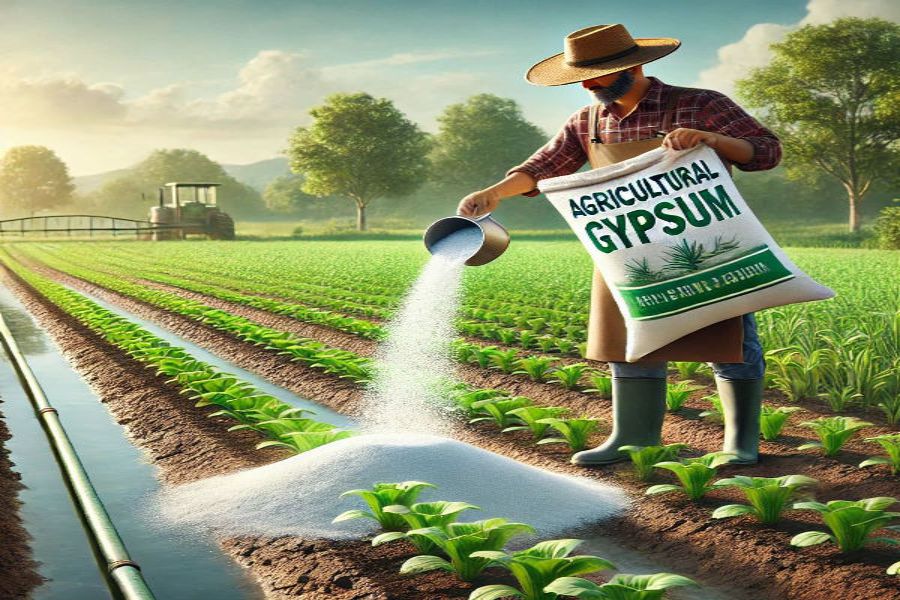Gypsum is a naturally occurring mineral composed of calcium sulfate dihydrate (CaSO₄·2H₂O). It is commonly found in sedimentary rock deposits and has a wide range of uses, particularly in agriculture due to its beneficial effects on soil and crops.
Uses of Gypsum in Agriculture:
1. Improves Soil Structure
Loosens Compact Soil: Gypsum helps to break up compacted soils, improving soil structure and allowing better air and water penetration to the roots.
-Prevents Soil Erosion: By improving soil structure, gypsum helps prevent soil erosion, which can result from heavy rain or wind.
2. Reduces Soil Salinity
-Decreases Sodium Levels: Gypsum is particularly useful for treating sodic (salty) soils. It helps replace sodium with calcium, which improves soil permeability and reduces salinity, allowing plants to thrive.
3. Provides Essential Nutrients
- Calcium Source: Gypsum is a good source of calcium, an essential nutrient that strengthens cell walls in plants, promotes root development, and helps with fruit and vegetable quality.
-Sulfur Source: Gypsum also provides sulfur, which is essential for protein synthesis in plants and helps enhance the overall quality of crops.
4. Improves Water Infiltration
-Helps Water Flow into Soil: In heavy clay or compacted soils, gypsum improves water infiltration, allowing rain or irrigation to reach the root zone more effectively.
5. pH Neutral
Doesn\\'t Alter Soil pH: Unlike lime, which raises soil pH, gypsum does not alter the pH of the soil, making it an excellent choice for treating saline or sodic soils without affecting the overall acidity.
6. Boosts Crop Yield and Quality
Increases Crop Growth: By improving soil structure, nutrient availability, and water infiltration, gypsum can help enhance overall crop growth and lead to better yields.
